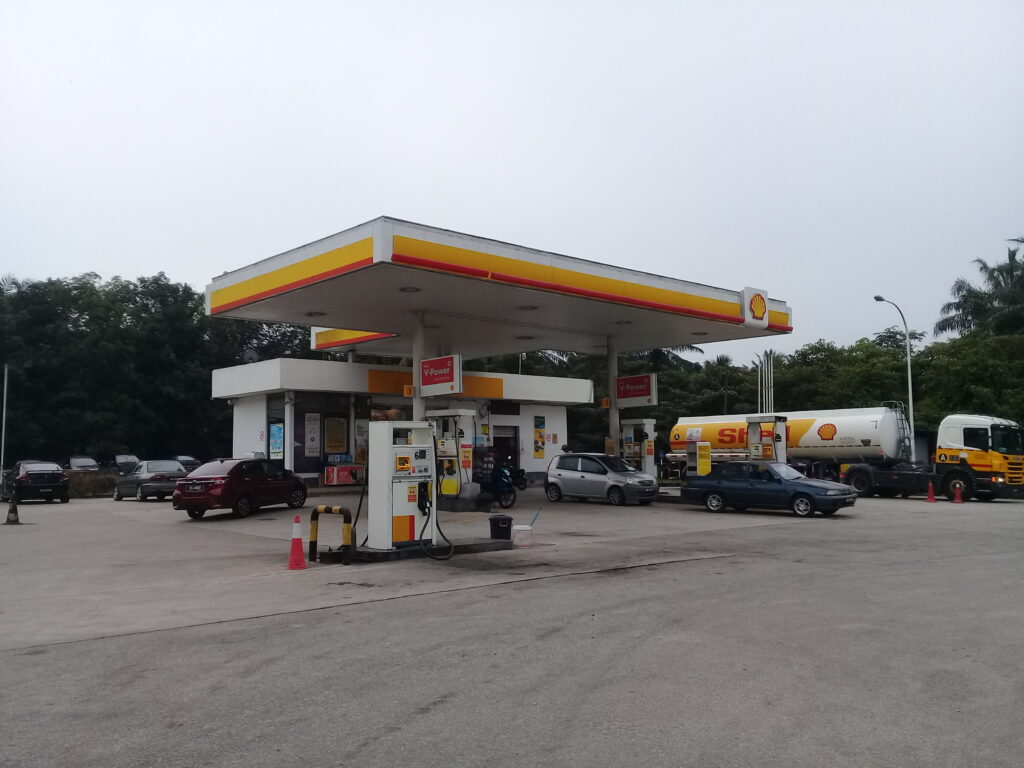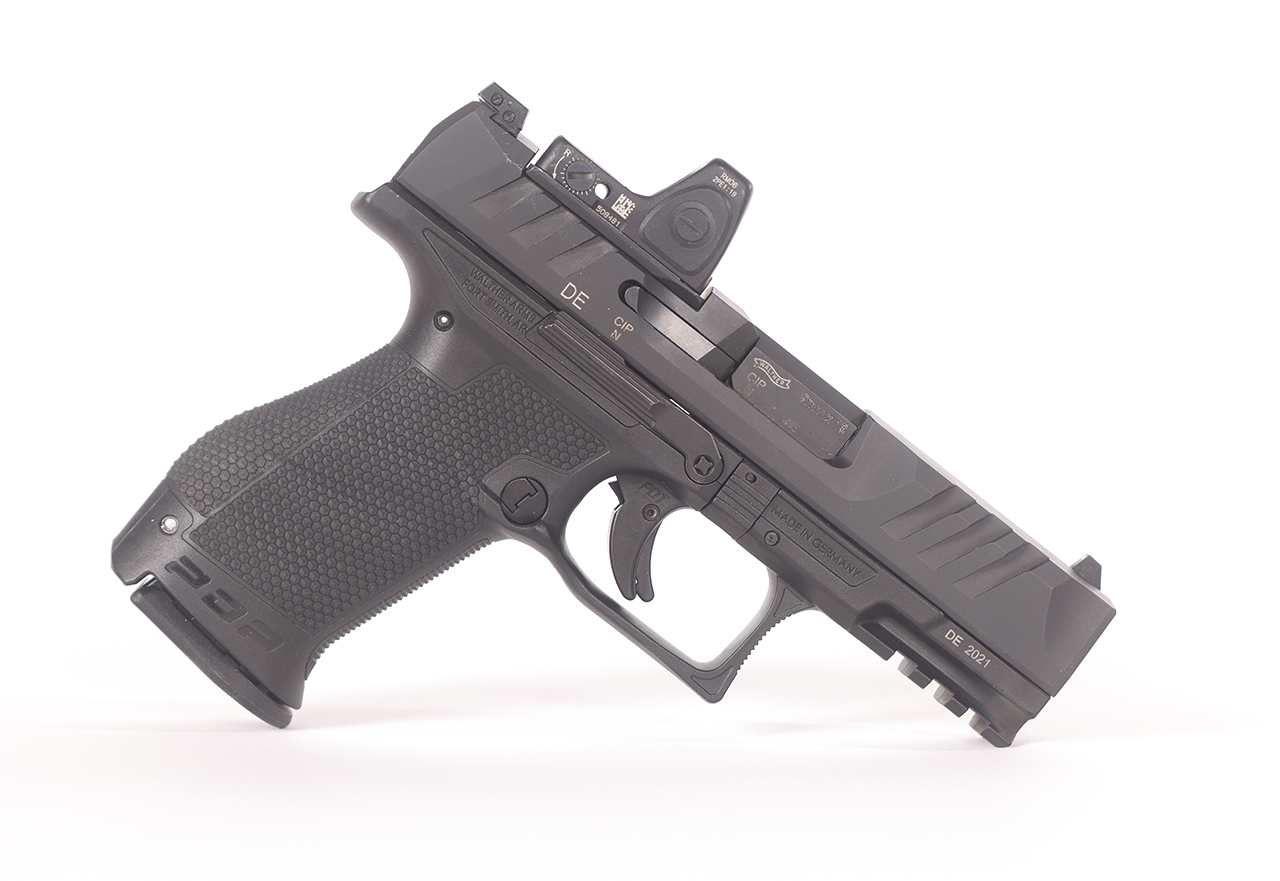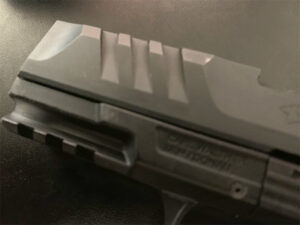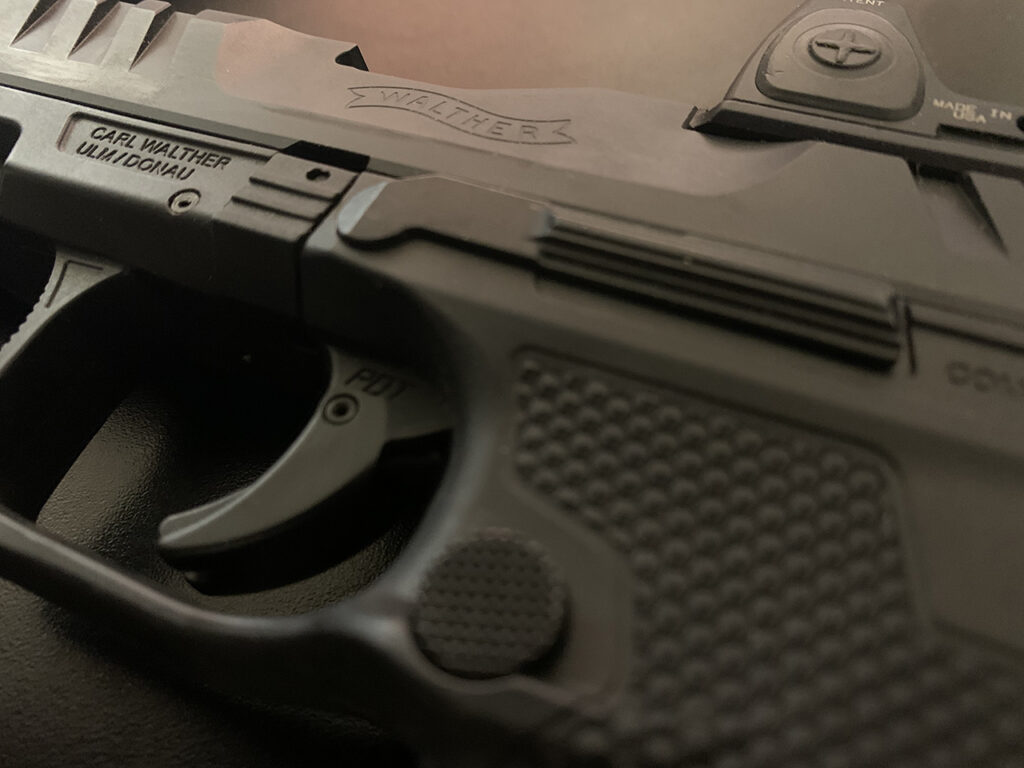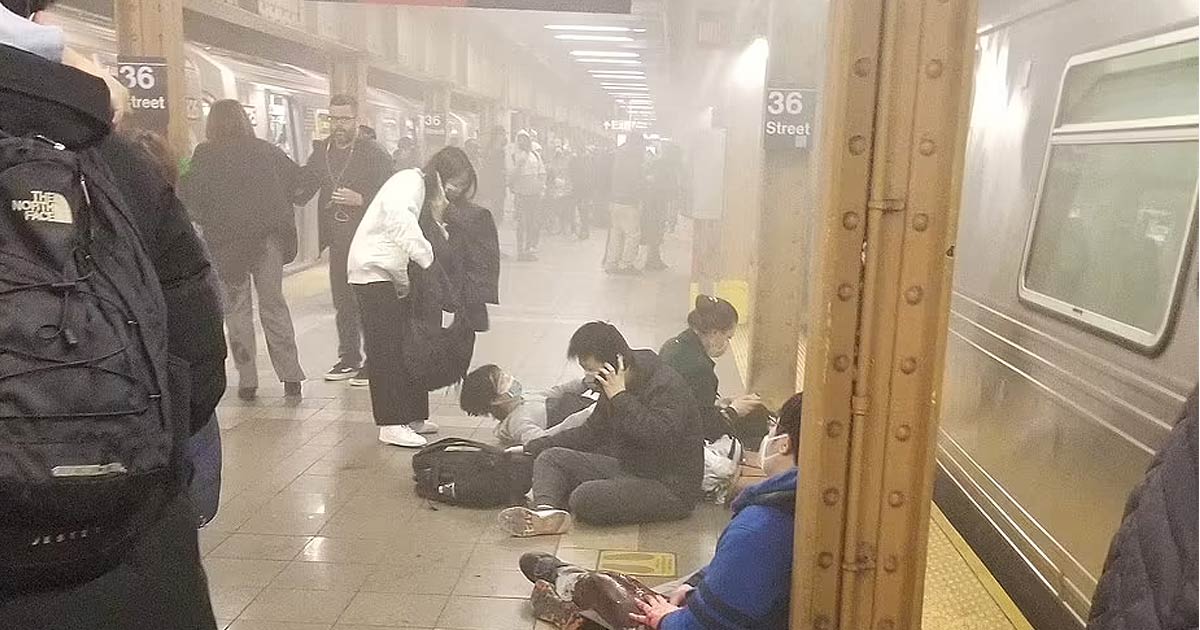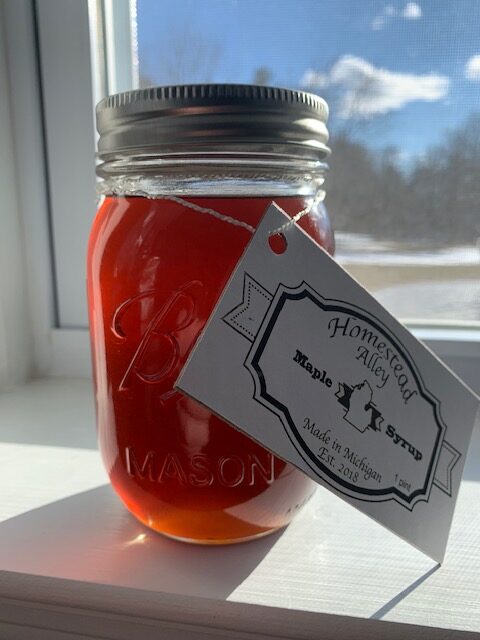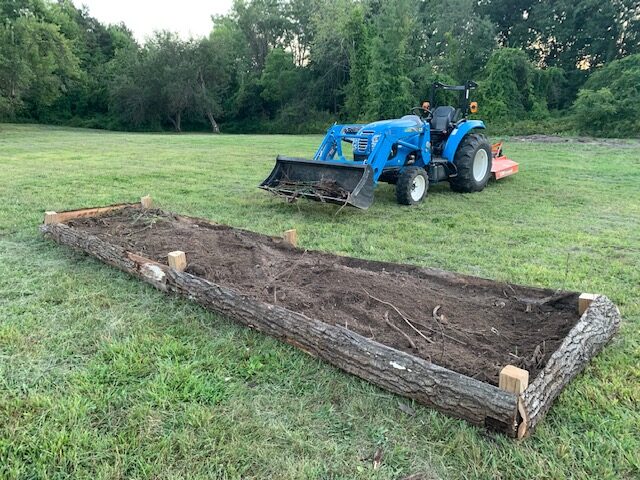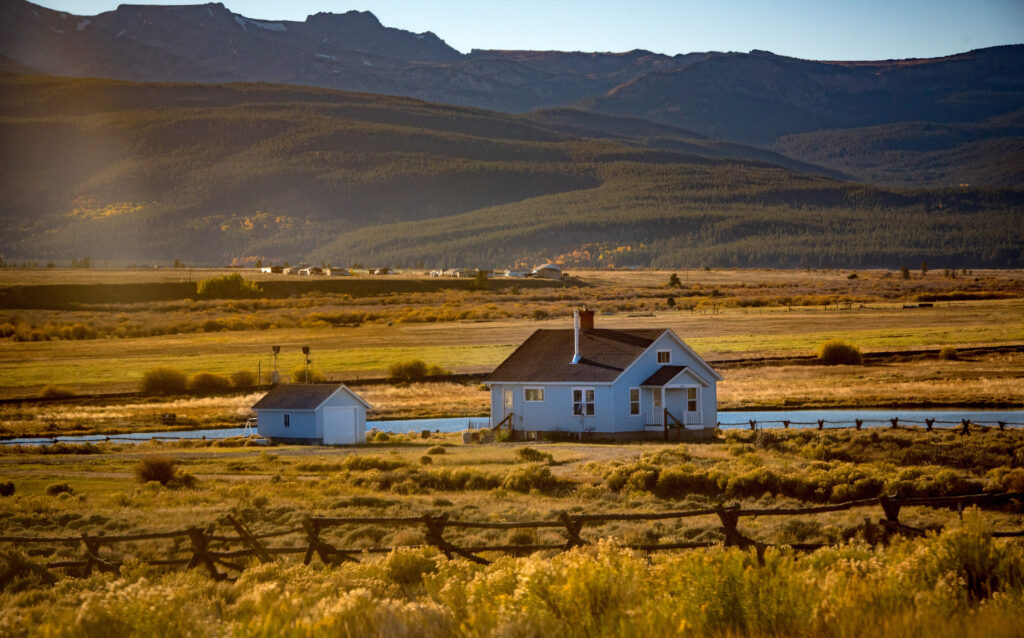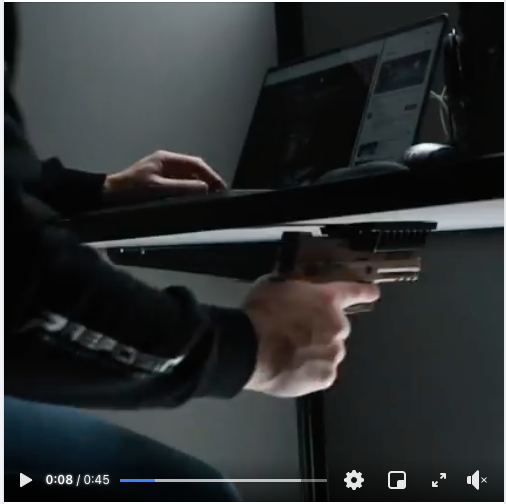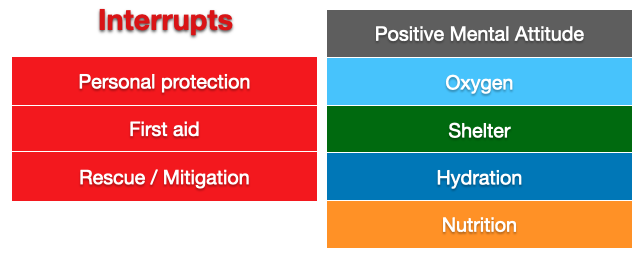A number of articles have recently come out by prominent firearms writers regarding the shoulder holster. Most of them relegate the shoulder holster to someone emulating English spies or reliving the glory days of 1980s buddy cop shows. But is there a place for the shoulder holster in modern times with modern carry methods and modern firearms? Let’s explore that and see.
The first thing we should do is define of the objectives and what we are actually looking for. Obviously a holster contains the firearm and makes it accessible when needed and safe when not. It is a balancing act between accessibility and concealability.
Secondly, the firearm, holster, location of carry, and clothing work together to make the ‘system’ of concealed carry. Our practice with that ‘system’ helps bring effectiveness. The ‘system’ stated above must serve the individual through needs of concealability, needs of access, and needs of range of motion.
Third, the ‘system’ should be judged stand-alone to fulfill needs.
Spectrum of concealability and accessibility
An ankle holster is quite concealable when carrying a small firearm. The pant leg is generally out of direct view, not an area that commands attention, and at a body location that sees regular, but consistent, manipulation (strides with movement). But getting to the firearm in this position requires a significant posture change. The wearer must kneel or bend over, or bring the leg up and supported to get the gun. The shooter will be very vulnerable and the draw will be very slow. Kneeling or leg-up is inherently unstable, and moving one’s hands from the upper-body ‘vitals’ area is a defensive risk.
On the opposite end of the spectrum is outside the waist open carry. Getting to the firearm can be incredibly quick, but concealability is nonexistent. The hands remain in the upper body protective zone and can defend against incoming strikes. Additionally, the very fast draw time means that even if the hand is out of defensive zone, it is out very briefly.
Ultimately, we are looking for reasonable concealability in our lives according to our comfort levels and the environment’s weapon permissiveness, balanced with immediacy of access.
Range of motion
Range of motion is the sum of movements that are a part of our typical day. Someone sitting in an office pushing a mouse around has a very different range of motion than a tree cutter or construction worker.
Where the firearm is staged on one’s body can affect the range of motion. Appendix carry inhibit bending forward. 3 o’clock or 6 o’clock carry can inhibit leaning to one side or the other. Any of these can inhibit reaching up for something and possibly exposing the firearm because the concealing garment shifted.
Next is actual range of motion needed on a job. The firearm strapped to one’s waist as they are on the ground changing oil is sure to get in the way. A professional driver sitting all day with appendix carry gets old. Every position and movement needed throughout the day needs to be evaluated from the paradigm of the firearm being present there. As an example, how many articles are there about public restroom use and waist belt carry? Dozens and hundreds.
Range of motion is usually a root factor in where we choose to carry the firearm. It is why we choose 3 o’clock carry, appendix carry, or something else. Especially when balanced against the needs of concealability, range of motion is important to keep the gun from printing or otherwise being exposed.
The reality for many people in real life is that if the firearm cannot be concealed it will probably be left at home; or worse, in a vehicle. Some firearms ‘absolutists’ (usually keyboard warriors attempting to claim a ‘no compromise under any circumstances ever’ faux mentality) would call this a “software failure” because the person chose to be unarmed instead of finding another solution, but the reality is for many people that if the gun prints, they will suffer some form of consequence. A lost client, disciplinary action up to loss of a job, having the police called on them for no reason, or other result from the firearms presence being known. This is a reality of life.
Stand alone comparison
Another measurable is meeting the needs versus comparing to something else. Most of the recent ‘shoulder holsters are archaic’ articles and writers evaluate shoulder holsters from the standpoint of “I like appendix carry and if shoulder holders are not superior to that then shoulder holsters suck“. This is not a true measurable. It may be their measurable, and it may be their bar for adopting it, but it does not mean that shoulder holsters are without merit. There is a difference between something meeting someone’s requirements and being the optimal way for them to carry for someone else. This is an important distinction.
In one YouTube video, a very well respected instructor even got the shot timer out for a comparison between appendix carry and shoulder holster carry. To his credit, he did practice with the shoulder holster for a couple hundred rounds and a few dozen draws before making the comparison. However, this instructor has on the order of 100,000 rounds down range or more, as well as thousands of appendix carry draw strokes in his experience. When the shot timer is within 1/10 of a second it is hard to take that difference in time seriously. The difference in time being portrayed as “conclusive” is not intellectually genuine given the disparity in experience between the two draw stroke styles. What would the difference be against an everything-else-equal shooter with the same experience in shoulder draw?
In short, the evidence of “I can do Draw A better than Draw B, therefore Draw B sucks” is not valid evidence for the carry method. It is evidence only for that individual at that point in time with that set of user needs. With additional training and additional experience, those results are subject to change.
Actual experience
These are basically our user needs. How concealable we need it, and how accessible we need it. Other factors, such as concealing garments the type of gun carried and the extent at which you will practice with this particular system are all factors.
To prepare for this article, I have been wearing a shoulder holster exclusively as my means of carry for four months. I started carrying shoulder holsters in cooler months when I had over garments to cover it, as well as had a number of work things to do around the homestead where belt carry was more problematic to my range-of-motion needs.
My user needs are pretty much average. I need the firearm to be concealed, not to print too much, and to be as readily accessible as it can be. My daily carry is a Walther PDP Compact with a Trijicon RMR site. Because the shoulder holster was not going to be primary carry when I bought it, and was for evaluation purposes, I did not go crazy with a custom holster. I got the AlienGear Shapeshift shoulder holster. (I am not a fan of AlienGear in general, and consider their waist holsters to be meme-tiered gear. In this case though it was a reasonable choice since it was one of the most modern shoulder holsters made and had availability for my primary carry.)
In reality, it isn’t that bad. It has a little bit of flex for upper body movement and is not restrictive as leather-strap-only shoulder holsters would be. It also has an anchor point at the belt, making the holster a bit more fixed when drawing the firearm. I think it is a reasonable modernization for this carry method. I would like to try a traditional shoulder holster in this role, but I’ll save that review for a later date.
As for concealability and accessibility, It carries in such a way that it is not generally noticeable. If I am wearing a zip down hoodie, the firearm is undetectable. If I am wearing an over shirt with a T-shirt underneath, and the over shirt is mostly unbuttoned, the firearm is barely noticeable. Someone would have to be purposely looking. A button down shirt with an undershirt is not unreasonable, or carrying with a shirt and a heavy or light jacket depending on the weather. In these cases, the holster-firearm combination is not detectable.
With concealability needs met, accessibility needs were evaluated. I am fortunate enough to have access to a private range where I am able to draw from holster, including shoulder holster. I spent a significant amount of time dry firing the draw and then live firing the draw, in a mixture. This helped to ensure that the dry fire application adopted was validated along the way with live fire results. In all cases, I was able to get shoulder holster draw within 15% of in the waist draw on a shot timer. Considering I had decades of from-the-waist draw, this was a very reasonable achievement. If someone were to adopt shoulder holster as their primary means of carry, they could probably achieve similar results to waist draw.
Keep and Bear LLC has a course called ‘Positions and Transitions’. If you have a martial backgrounds, it is effectively a “breakfalls and bullets” course that trains in going from standing to kneeling, prone, supine, and urban prone, and back up again. The purpose of the course is to allow the trainee to not only conform to any cover or concealment that is available to him and retain the ability to proficiently respond, but also to proficiently respond if they are knocked down or find themselves in a violent altercation from a position other than standing. The course employees a great “library” of shooting positions and was therefore used to evaluate the shoulder holster from these positions.
The advantages in accessibility to the firearm in the shoulder holster were stark. Because the torso area is basically the fixed point of the body which other parts are reference to, the draw stroke from the shoulder holster remained remarkably consistent. Whether standing, kneeling, supine, or urban prone, the draw stroke was the same. This had distinct advantages over the 3 o’clock carry position because to access a 3 o’clock carried firearm, one’s elbow has to extend past the back plane of the body. This requires rotating to the left in the supine position.
Side of body carry had advantages when drawing from prone. Because the shooter is on his stomach, he can access the 3 o’clock position rather easily. It was more difficult to access the shoulder holster firearm from this position, but with training and practice it was achievable. Drawing from appendix carry in the prone position was problematic, but was achievable when using the support arm elbow and knees as a bridge to create the room to access the firearm.
You’ll shoot your eye out, kid!
A common criticism of the shoulder holster is the premise that to draw the firearm, the wielder must sweep his own arm or people to his left (assuming a right handed shooter). I reject the notion that the shoulder holster cannot be drawn from without sweeping your arm or those around you. This is a falsehood uttered by either bias, inexperience, or an inability to train properly. When one grips the firearm in the shoulder holster and gives the initial pull to deholster, the support arm should be squeezing the holster in place if possible. It isn’t absolutely required, but does add a modicum of rigidity. Immediately after that initial pull, the support arm comes up slightly in a chicken wing. It doesn’t have to be a very high up because the shooter should be drawing the holster up into a Sul position, not sweeping through a sideways arc to achieve a full extension position. Evaluators that are using a full sweeping motion like that appear to be either stacking the deck against the shoulder holster application, or they are not truly “expert“. Yes, I said it.
Once the primary hand and firearm are in the Sul position, extend the firearm out normally with the support hand quickly following and meeting up with the handle to achieve a grip. The firearm can be fired during the extension single-handed, and eventually double handed like most people shoot with an isosceles grip. This movement should be akin to shooting movement most have practiced extensively.
When drawn this way, the muzzle does not sweep the entire side arc of the person. The muzzle was at the 6 o’clock position and downward, rotated to the ground position, then swept at the ground as it was pulled around the body through the 9 o’clock to the 12 o’clock position. Sweeping to the side is amateurish and unnecessary.
Conclusion
The major benefits of a shoulder holster, are not really in concealability or in deployment. They are in range of motion and comfort. And by comfort I don’t mean comfortable, I mean that it frees up a significant range of motion library for the wearer. In reality, we all have various ranges of motion we go through during the day. Whether we are denizens of the cubicle, with sit down stand up and run to the vending machine actions, or like a friend of mine who repairs restaurant equipment and is always reaching for things while on the ground, range of motion is very significant. This is something that needs to be considered in a carry strategy, and there is no universal correct answer. There is only correct for you. For me, the range of motion with a shoulder holster was met. Occasionally laying down and fixing some thing around the homestead, the shoulder holster took the gun out of my waist where a bunch of weight is normally distributed, and put it out of the way. Driving, it took a “bunched up feeling“ out of the equation entirely as the gun was up on my upper body. As a left-handed person sitting at the wheel, to deploy my firearm I would have to lean to the right since there’s no room for my elbow when making a waist belt draw. The shoulder holster allows me to literally draw from the holster with no upper body movement required for this. This is a significant advantage. For people who drive a substantial amount of time, and for people who have a lot of movement in their waist area or up and down and the like, a shoulder holster has considerable merit.

